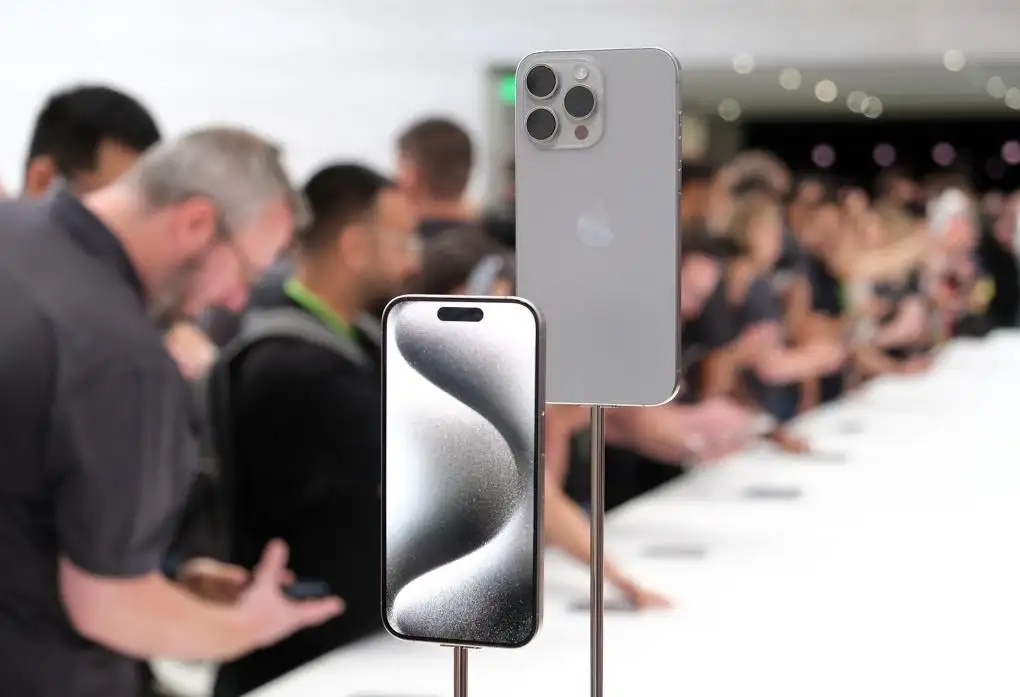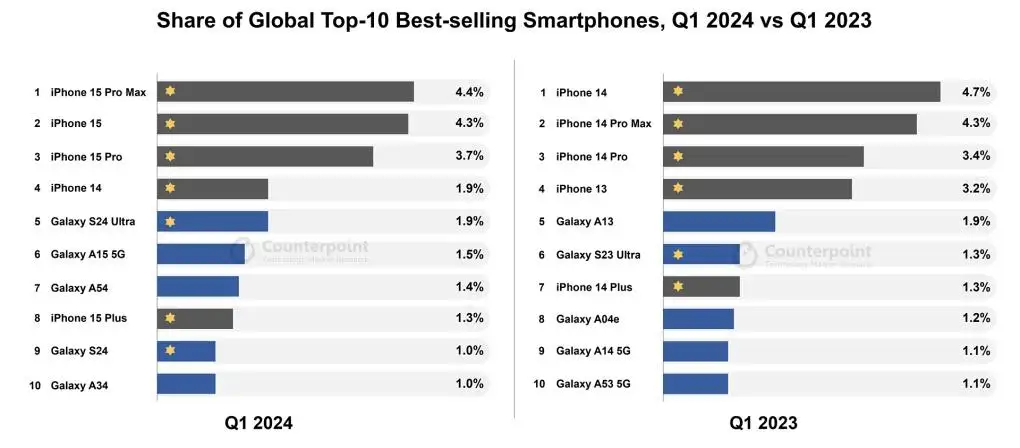Apple and Samsung dominate the Top 10 best-selling phones of Q1 2024, with the iPhone 15 Pro Max taking the crown as the most popular model.

According to market research firm Counterpoint Research, Apple’s top-tier iPhone captured 4.4% of the global smartphone market share in the first three months of the year. The next four spots were held by the iPhone 15 (4.3%), iPhone 15 Pro (3.7%), iPhone 14 (1.9%), and Galaxy S24 Ultra (1.9%).
Since its launch in September 2023, the iPhone 15 Pro Max has held the number one position for two consecutive quarters. However, Counterpoint notes that this is the first time an Apple Pro Max model has achieved this position in the first quarter, traditionally a “slow” period for Apple as users tend to buy more affordable iPhones. For instance, last year, the iPhone 14 led the pack with a 4.7% market share.

“This reflects the growing trend of consumers favoring high-end phones,” Counterpoint analyst concluded.
This trend is also evident for Samsung. Last year, the company’s best-selling phone during this period was the mid-range Galaxy A13, with sales one and a half times higher than the S23 Ultra. This year, the S24 Ultra holds that position.
Experts believe that consumers are willing to pay more for premium features. The iPhone Pro lineup boasts enhancements like the Dynamic Island display, an advanced chipset, a titanium frame, and a telephoto camera, while the S24 Ultra offers a new design, new materials, and AI-powered image generation.
Additionally, smartphones are no longer showing significant feature differentiations with each new generation. Users have reduced their need to upgrade to new devices frequently, so they often opt for high-end phones to last them for an extended period.
Counterpoint’s data also reveals a positive outlook for the smartphone market, with sales increasing 6% year-on-year to reach 296.9 million units. Apple is performing well in the premium segment but is still facing overall revenue decline. In its financial report on May 2, the company acknowledged a 10% drop in iPhone revenue, reaching $46 billion.


